
by Lorri | May 4, 2016 | UnCorked
Does the issue of global warming have the potential to affect our next glass of wine?
That seems to be a hot topic in the industry (no pun intended). I have given much thought to the subject but will not expound on disappearing polar bears, rising sea levels or the increasing greenhouse gases. Instead, I will offer a few thoughts on wine in our ever-changing environment.
Of course climate is crucial in the growing of grapes. Napa and Sonoma valleys are perfect examples of that. If not for the Golden Gate gap, this land would be too hot for growing the celebrated cabernet sauvignon, merlot and pinot noir grapes. The gap draws cold air from the ocean and pushes it into the valleys, creating fog and causing a 30-degree variation between daytime and nighttime temperatures. (Also known as natural air conditioning.)
If the climate is changing, it seems reasonable that prominent wine-growing regions around the world will be affected. While higher temperatures of only a couple of degrees may not seem that dramatic, when applied to growing grapes for wine it is. These higher temperatures allow ripening of grape varieties that traditionally struggle or simply can’t ripen sufficiently in lower temperatures. Many growers are protecting grapes from the higher temperatures with shading trellises, while others are harvesting the grapes earlier to beat the heat. Drought is another aspect of climate change with which growers are contending.
This week’s value and splurge come from vintners working to create sustainable, eco-friendly wineries.
THE VALUE
- 2013 Kendall Jackson Cabernet Sauvignon, California (about $14 retail)
THE SPLURGE
- 2013 Bonterra Merlot, California (about $16 retail)
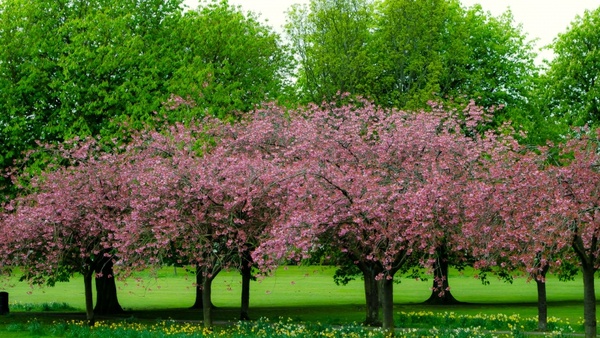
by Lorri | Apr 27, 2016 | UnCorked
I’m asked many times “are you a red or white wine drinker?” My answer is, of course, both, but as the weather warms I admit I veer more to white as an everyday beverage. These are a few of my top picks for refreshing white varietals.
Chardonnay is a love-it-or-leave-it grape variety for most consumers. It’s known as the “King” and also “the Coca-Cola of the wine world.” It didn’t get its reference to “King” in the wine Hall of Fame for nothing. Chardonnay tops the list for the most consumed grape variety, topping even the most popular reds. It comes in all shapes and sizes. In warmer growing conditions it exhibits flavors of ripe, tropical fruits such as pineapple and mango, notes of pear and stone fruit. In cooler climates such as France’s Chablis, the wines are more delicate and citrusy, with a slight honey character.
THE VALUE
- 2014 Bogle Chardonnay, California (about $12 retail)
THE SPLURGE
- 2014 Force of Nature Chardonnay, California (about $24 retail)
Viognier is another of the underrated white grapes that is beautifully aromatic and can be an ideal blending partner for chardonnay. On its own, it’s much different from the tropical smells of chardonnay and overflows with intoxicating aromas of apricots, fresh flowers and oranges. On the palate it is fuller-bodied than most whites, but with a well-balanced mouth feel and low acidity. France’s Rhone Valley is known for its viognier, but there are many newcomer wine regions in Chile, Australia and South Africa producing exceptional wines.
THE VALUE
- 2014 LaPlaya Estates Viognier/Chardonnay, Chile (about $9 retail)
THE SPLURGE
- 2013 Calera Mount Harlan Viognier, California (about $38 retail)
Chenin blanc has been referred to as “handier than a Swiss Army knife” by many, simply because it adjusts to almost any production method, be it sweet, dry or even fizzy. It shares many similarities to sauvignon blanc, with its refreshing green apple and fresh herbs. It’s at home in France’s Loire Valley, where the style can be racy, dry, luscious, sweet or with a frothy fizz. You can also find chenin blanc in the vineyards of South Africa, where it once accounted for a staggering quarter of all grapes grown and wine produced.
THE VALUE
- 2014 Pine Ridge Chenin Blanc, California (about $12 retail)
THE SPLURGE
- 2014 Dry Creek Chenin Blanc, California (about $16 retail)
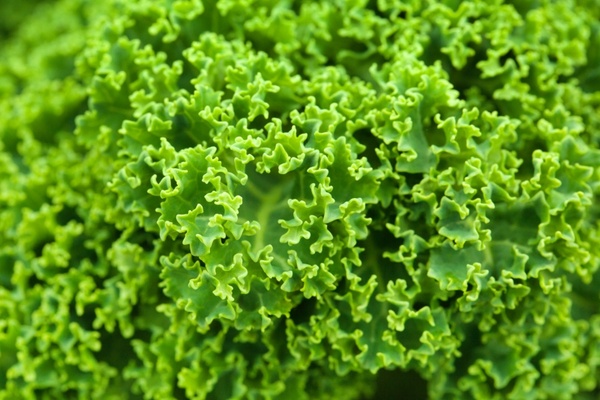
by Lorri | Apr 20, 2016 | UnCorked
What once was a mere bed of lettuce with some vinaigrette drizzled on top is now a centerpiece on the menu and an entree option. When it comes to pairing wine with salad, the approach is much the same as selecting which wine to pair with fish or meat. As we continue to learn the principles of wine and food pairing, there usually is not a single answer.
Salads are complex dishes featuring a range of flavors and textures. All components must be considered. Does the salad include fruit? What is the type of protein? Is the dressing light or heavy? And most importantly, what are the dominant ingredients?
PASTA SALAD
Pasta salad flavors can range from Greek to Asian and include a diverse addition of ingredients, from salmon and anchovies to vegetables and even barbecued pork. The pasta most likely will take backstage while the flavor profile determines the wine pairing. Just as with any pairing, consider the weight and taste of the main ingredients and then consider your wine.
THE VALUE
- 2014 Sean Minor Chardonnay, California (about $12 retail)
THE SPLURGE
- 2014 Chateau Ste. Michelle Cold Creek Chardonnay, Washington (about $26 retail)
SALAD NICOISE
This is an easy pairing recommendation. The saltiness of the tuna and olives, the acidity of the tomatoes and the heaviness of the green beans and potatoes make this ideal for a refreshing, light-bodied dry rose.
THE VALUE
- 2014 La Vieille Ferme Rhone Rose, France (about $11 retail)
THE SPLURGE
- 2014 Hogwash Rose, California (about $18 retail)
SPINACH AND STRAWBERRY SALAD
The sweetness of the strawberry mixed with the bitterness of the spinach calls for a wine with good acidity but also a touch of sweetness, such as moscato or Riesling.
THE VALUE
- 2014 Bella Sera Moscato, Italy (about $9 retail)
THE SPLURGE
- Tintero Moscato, Italy (about $17 retail)
CAESAR SALAD
The Caesar is reasonably easy to pair as long as anchovy does not overwhelm the salad. Because of the creamy texture and taste, it pairs well with a light-bodied white wine such as a pinot grigio, dry rose or sauvignon blanc. If it includes grilled chicken, a lightly oaked chardonnay would shine with the smoky combination.
THE VALUE
- 2014 Montes Classic Chardonnay, Chile (about $11 retail)
THE SPLURGE
- 2014 Presqu’ile Chardonnay, California (about $33 retail)
GOAT CHEESE SALAD
If you have ever had goat cheese and sauvignon blanc in a tasting, you know this combination is a natural. It is one of my favorite salad pairings. The goat cheese has searing acidity and saltiness that pairs perfectly with the crisp, refreshing high acidity of sauvignon blanc.
THE VALUE
- 2014 Oyster Bay Sauvignon Blanc, New Zealand (about $12 retail)
THE SPLURGE
- 2014 Kim Crawford Sauvignon Blanc, New Zealand (about $19 retail)
SPINACH AND BACON SALAD
This smoky, salty salad creates a complex pairing opportunity. Often this recipe includes a blue cheese dressing, making it all the more interesting to explore a red wine.
THE VALUE
- 2013 Cline Sonoma Pinot Noir, California (about $14 retail)
THE SPLURGE
- 2013 Reynolds Winery Carneros Pinot Noir, California (about $43 retail)
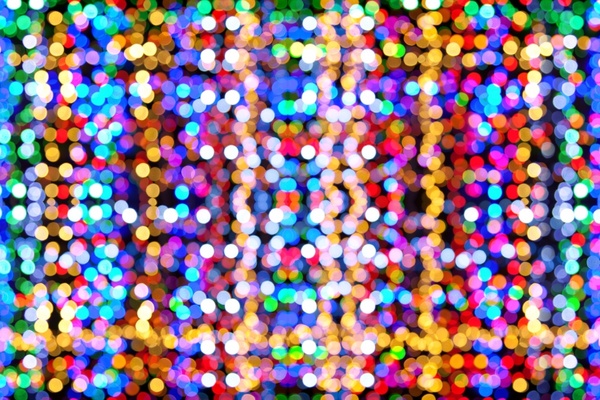
by Lorri | Apr 13, 2016 | UnCorked
March marked my 11th anniversary writing Uncorked. I absolutely love sharing my thoughts each week, but more importantly I enjoy your feedback. Much of it turns into Uncorked columns.
Each year as I celebrate this anniversary, I am reminded that my aim for this column has always been to offer honest recommendations of great wine finds in our market. But more than the recommendations, I hope this column makes wine, often a pretentious and confusing subject, fun to explore and more enjoyable to drink.
This next year, as we continue our wine journey together, please keep the questions and feedback coming. You’re the reason I write the column and your thoughts, questions and suggestions help me immensely.
These are some of my favorite wines from the past year.
Enjoy!
THE VALUES
- 2015 A to Z Pinot Gris, Oregon (about $14 retail)
- 2015 Sawbuck Chardonnay, California (about $14 retail)
- 2014 Tercos Torrontes, Argentina (about $12 retail)
- 2014 St. James Winery Cynthiana, Missouri (about $10 retail)
- 2014 Stellar Organics Merlot, South Africa (about $12 retail)
- 2013 Chateau Bonnet Blanc, France (about $15 retail)
- 2012 Mas des Roches Cotes-du-Rhone Rouge, France (about $15 retail)
THE SPLURGES
- 2013 Tooth and Nail “The Stand,” California (about $28 retail)
- 2013 Keenan Napa Valley Cabernet Sauvignon, California (about $47 retail)
- 2013 Schug Sonoma Coast Pinot Noir, California (about $24 retail)
- 2013 Decoy by Duckhorn Pinot Noir, California (about $26 retail)
- 2014 Sean Minor Nicole Maria Red Blend, California (about $24 retail)
- 2012 Chateau Mongravey, France (about $50 retail)
- 2014 Bell Winery Sauvignon Blanc, California (about $18 retail)
- 2013 Mira Cabernet Sauvignon, California (about $52 retail)
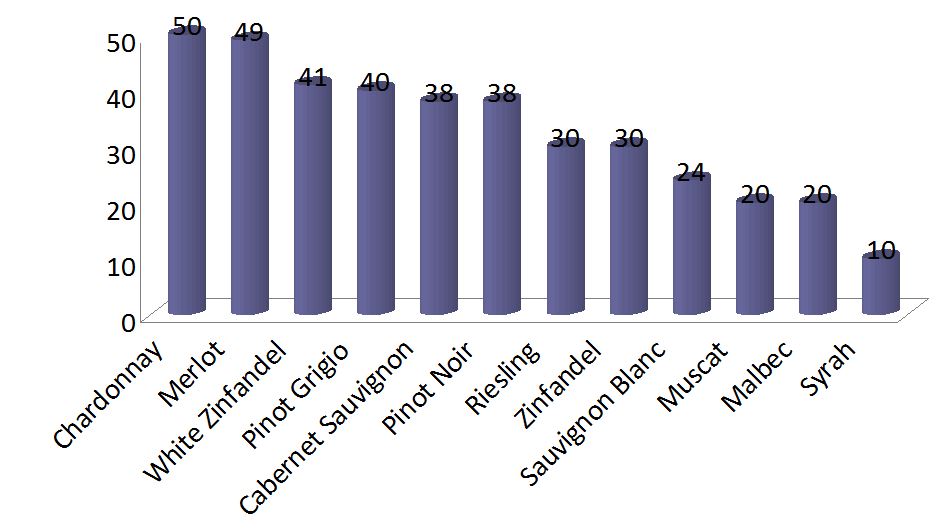
by Lorri | Apr 6, 2016 | UnCorked
I recently read an intriguing article published last year at winebusiness.com about the 2015 Survey of American Wine Consumers Preferences by Liz Thach and Kathryn Chang.
The survey, conducted by California’s Sonoma State University and the Wine Business Institute, looks at Americans’ wine-buying habits and preferences.
The American market has not always been the largest in terms of wine consumption, especially compared with countries such as Italy and France, but according to the study, we have been since 2010. So what exactly are we buying, why do we buy it and where do we buy it? These are some of the questions addressed in the survey.
The survey collected data from wine consumers in all 50 states and comprised 1,072 American wine consumers (59 percent women and 41 percent men) and a mix of ages and socioeconomic groups.
The racial breakdown was 65 percent white, 13 percent Hispanic, 11 percent black and 11 percent Asian. The median annual income was $50,000 to $69,999, with 18 percent of participants earning more than $100,000.
The survey respondents were highly educated, with 60 percent with a college degree (compared with roughly 30 percent of the U.S. population). So it is fair to say that while this survey may reflect the tastes and habits of the average wine drinker, it isn’t representative of the average American.
The majority (56 percent) of respondents reported that they consume wine daily or several times per week.
Using a “check all that apply” question format, respondents were asked to rank 12 popular wine varietals. There were no surprises here, with chardonnay (the most popular wine in America) on top, followed closely by merlot. And even though we don’t always want to admit it, we are a white zinfandel drinking nation, as it came in third. Pinot grigio, cabernet sauvignon, pinot noir and Riesling rounded out the top seven, respectively.
Participants were asked about their preferred styles of wine as well, with a near tie between fruity and semi-sweet. The least favorite style was tannic wines.
Price and brand were the top factors that influence which wines we buy, according to the survey. Thirty-two percent of Americans prefer wines in the $10-$15 price range to drink at home, with only 12 percent reporting they spend more than $46 per bottle. Wine shops and liquor stores are the preferred place to buy wine (30 percent), followed by grocery stores (17 percent), with online sales coming in at the bottom with just 6 percent.
All in all, the study offered interesting statistics on our wine preferences. So, before judging friends and family buying $10 bottles of fruity white zinfandel for not being “real” wine drinkers, you may want to reconsider.
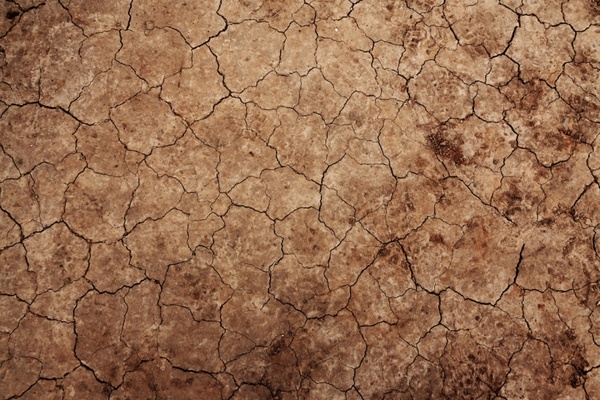
by Lorri | Mar 30, 2016 | UnCorked
The alcohol percentage in wine is a hot topic of discussion for wine drinkers. This conversation is often about the noticeable difference in wines over the past decade, as some wines have crept up from a “norm” of 13.5 percent to as high as 17 percent.
What determines a wine’s alcohol content is straightforward. As grapes ripen they accumulate sugar, which is then converted to alcohol during the fermentation process. Grapes with more sugar produce wines with more alcohol. Grape climate sets a wine’s alcohol level.
Some grapes are naturally higher than others in sugar, but growing conditions as well as terroir have a large impact. If the grape has to struggle to ripen, it may have less natural sugar, resulting in a lower alcohol wine. If the grape is growing in a warm or hot climate, it will most likely have high levels of sugar.
Wine grapes are like any other fruit. If you have ever picked a strawberry before it’s ripe and taken a bite, then enjoyed a berry from the same crop that was left to slowly ripen on the plant with ample sun and ripening power, the sweetness level is dramatically different.
U.S. law permits a 1.5 percent variance from the ABV (alcohol-by-volume content) printed on the wine label.
VERY LOW
Wines with less than 12.5 percent alcohol are considered very low alcohol wines. These include rose, white German riesling, Portugal’s vinho verde, French Vouvray, Italian Asti, Italian Prosecco.
THE VALUE
- 2015 Famega Vinho Verde Blanco, Portugal (about $9 retail)
THE SPLURGE
- 2015 Zonin Prosecco, Italy (about $17 retail)
LOW
Wines with 12.5 percent to 13.5 percent alcohol fall into the low alcohol category. These include Spanish Cava, California sparkling, Champagne, Italian pinot grigio, Oregon pinot gris, Spanish or California albarino, Beaujolais and Spanish Rioja.
THE VALUE
- 2015 A to Z Pinot Gris, Oregon (about $14 retail)
THE SPLURGE
- 2015 Stasis Albarino, California (about $45 retail)
HIGH
Wines with 13.5 to 14.5 percent alcohol are high alcohol wines and include California chardonnay, Australian chardonnay, Australia shiraz, Barolo, Chilean merlot, and California cabernet sauvignon.
THE VALUE
- 2015 Matchbook Chardonnay, California (about $15 retail)
THE SPLURGE
- 2014 Force of Nature Cabernet Sauvignon, California (about $26 retail)
VERY HIGH
Wines exceeding 14.5 percent alcohol are very high alcohol wines. Examples include Spanish sherry, California zinfandel, Amarone and port.
THE VALUE
- NV Osborne Sherry, Spain (about $14 retail)
THE SPLURGE
- 2014 Earthquake Zinfandel, California (about $26 retail)





